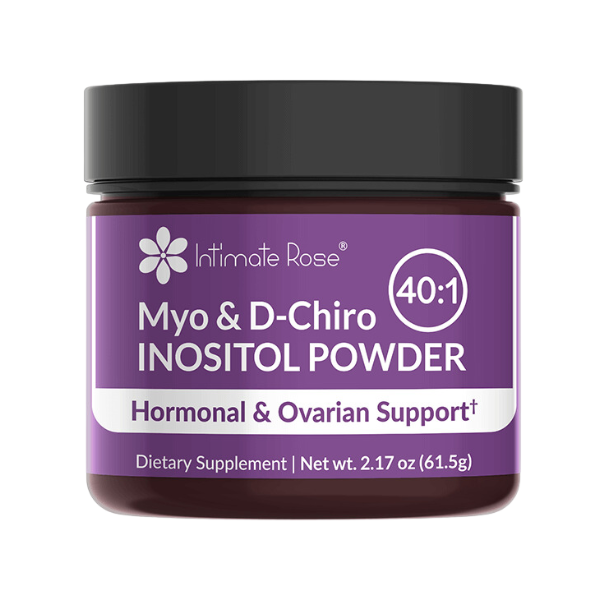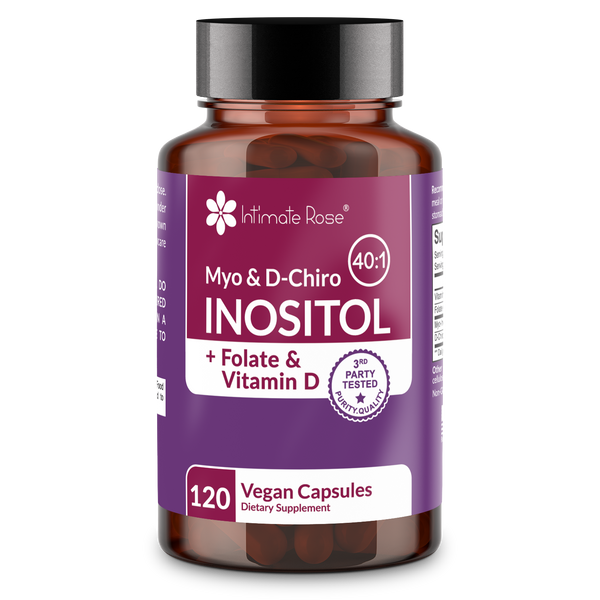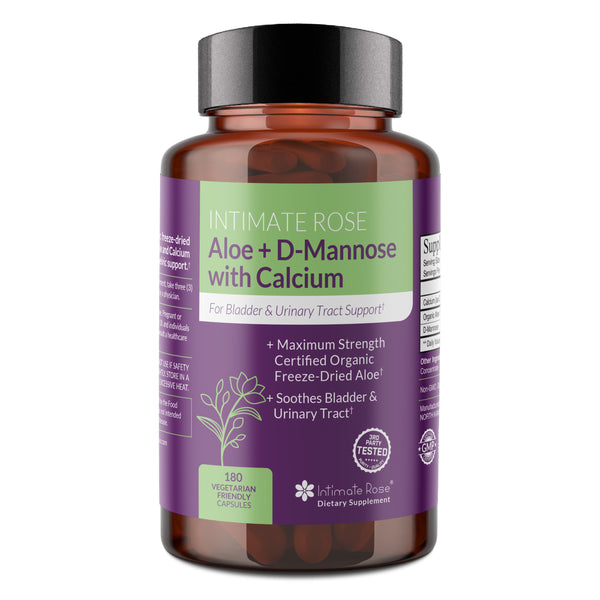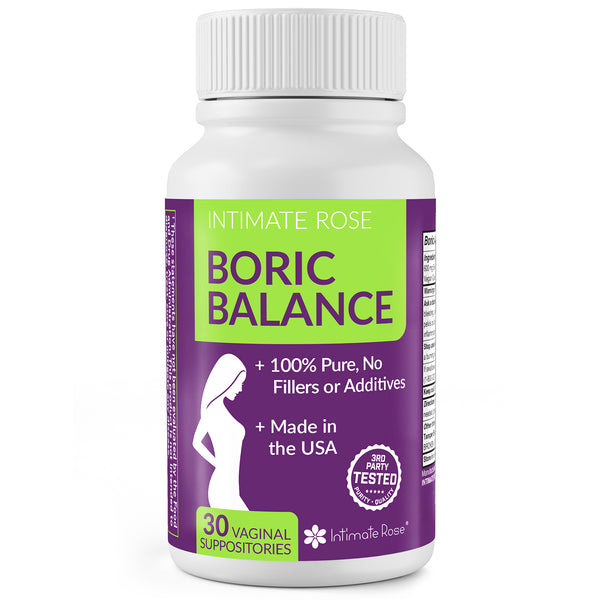What is Vaginal Discharge? | What Causes Brown Discharge? | Conclusion
Treating and preventing brown discharge is something many women regularly consider but it's important to know that the appearance of vaginal discharge changes for several reasons throughout the month and brown vaginal discharge often indicates the end of your period.
But if you are experiencing it regularly and wondering how to stop brown discharge, then you'll want to read our guide which covers the causes of brown vaginal discharge and the top remedies as well as lifestyle considerations.
Most Common Causes of Brown Discharge (Other Than Menstruation)
If you are not menstruating, a brown vaginal discharge could signal an infection, hormonal fluctuations, or an underlying issue with the uterus or ovaries. Here are some potential causes:
- Spotting
- Menopause
- Bacterial Vaginosis
- Trichomoniasis or Other Infection
How to Stop Brown Discharge: Home Remedies
To stop brown vaginal discharge, practice good hygiene and safe sex, take natural supplements when needed and specific medications if an infection is the root cause. These are some of the top remedies for treating brown vaginal discharge. Below, we’ve outlined in greater detail how and why each is effective.
Practice Good Hygiene
While there isn’t much women can do to stop brown vaginal discharge at the end of the menstrual cycle, or from spotting due to starting hormonal contraception, daily genital hygiene can reduce how much you see in your underwear. Maintaining good genital hygiene by keeping the vagina clean and dry will also help to prevent infections that result in brown vaginal discharge.
To keep the vagina clean all that is required is a daily wash with warm water and unscented soap with a clean washcloth. Even though they are advertised as products that keep the vagina clean, douches disrupt the natural balance of bacteria in the vagina and should be avoided at all costs. Scented soaps and fragranced tampons can have the same effect on the vaginal flora and should also be avoided.
Practice Safe Sex
Practicing safe sex with new, or not yet tested partners, will reduce your risk of contracting BV or STIs that cause brown vaginal discharge like trichomoniasis. Barrier methods like condoms, diaphragms, and cervical caps are considered the best barrier contraceptives.
Use Lubricant
If you are going through menopause and vaginal dryness is resulting in a brown vaginal discharge after sex, consider using a personal lubricant to prevent tears or bleeding during intercourse. To maintain the natural balance of bacteria in the vagina, female health experts recommend using a natural water-based lubricant over silicone or oil-based lubricants.
Consider Taking Daily Probiotics
Although antibiotics are required to treat vaginal infections like BV and STIs like trichomoniasis, the good bacteria lactobacilli, which is abundant in probiotics can significantly help to rebalance the vaginal flora and soothe the ensuing symptoms.
For example, during a recent study, a group of women who were given probiotics as well as antibiotics to treat BV over 30 days, saw cure rates close to 90 percent. Whereas those who received only antibiotics recorded a cure rate closer to 40 percent.
Probiotics like Flora Bloom Probiotics for Women from Intimate Rose, are also known to rebalance the vaginal bacteria after an STI, and for those who are susceptible to recurring BV infections, an ongoing daily dose stops future infections from occurring.
The Ultimate Vaginal Bundle

Get Tested Regularly
If you are sexually active with more than one partner, the CDC recommends being tested for BV and STIs at least once each year. If you suspect you may have BV or an STI, schedule an appointment to be tested immediately to avoid any long-term damage or passing it on to anyone else.
Flush It Out
Staying hydrated, by drinking at least 1.5 liters of water per day, is helpful to promote vaginal health by flushing out harmful bacteria or parasites from the urethra that could result in infection.
Understanding Discharge
What Is Vaginal Discharge?
Vaginal discharge is the body’s way of keeping the vagina clean, healthy, and free from infections. Cervical glands within the vagina produce small amounts of fluid which then collect bacteria and old cells as it flows downward and out of the vagina. Healthy vaginal discharge is typically odorless and clear or milky-white in color.

Things Off Down There?

Things Off Down There?
What Causes Brown Vaginal Discharge?
Brown vaginal discharge is usually caused by blood mixing with vaginal discharge. And while some cases are harmless, others could be signaling an underlying infection or condition.
The most common causes of brown vaginal discharge include:
Menstruation
Although it might not occur every month, it is perfectly normal to experience a brown & odorless vaginal discharge at the end of your period. Most lingering menstrual blood is naturally broken down by the body, but it can sometimes leak into underwear a day or two after menstruation ends. This type of discharge is nothing to worry about.
Spotting
Bloody vaginal discharge that occurs outside of menstruation is called spotting. Starting hormonal contraception like birth control pills or IUDs can cause spotting in the first few months as the body becomes used to the altered levels of hormones. Women who forget to take the pill for a few days may also notice some spotting.
However, spotting could also be a sign of polyps, polycystic ovaries, pregnancy, miscarriage, uterine fibroids, or cancer. As a general rule, spotting is typically light brown and doesn’t last more than a few months. If spotting occurs for longer, appears as heavy blood clots, or is accompanied by severe pain, or bleeding after sex, contact your doctor to rule out anything serious.
Menopause
During perimenopause, estrogen levels normally begin to drop, typically resulting in symptoms like hot flashes, mood swings, insomnia, and a drop in libido. Sometimes, brown vaginal discharge can also occur due to irregular menstruation and spotting.
Lower levels of estrogen can also cause vaginal dryness (atrophy), resulting in a thinning and loss of elasticity in the vaginal walls. Due to the dryness and lack of elasticity, women experiencing perimenopause or menopause can struggle with dyspareunia, or pain during sex. This pain is typically caused by micro tears or abrasions during thrusting and often results in a brown vaginal discharge after sex when small amounts of blood combine with vaginal secretions.
That said, uterine bleeding can also occur during menopause so it is important to schedule an appointment with your healthcare professional to ensure nothing more serious is at the root of brown vaginal discharge during this stage of life.
Bacterial Vaginosis
Bacterial vaginosis (BV) is caused by a bacterial imbalance in the vagina that typically worsens during menstruation or after sex for many women, however, others experience no symptoms at all. Those who do usually report genital itching, burning during urination, and an unusual vaginal discharge.
Even though vaginal discharge typically turns grey with BV, it can appear brown for some and is invariably accompanied by a fishy odor, which is the result of the bacteria interacting with either blood during menopause or semen during sex.
Trichomoniasis
Caused by a parasite that is spread during penetrative vaginal sex, trichomoniasis is one of the most common sexually transmitted infections (STIs) globally. Although as many as 85% of infected women experience no symptoms, those who do report indicators like an unusual vaginal discharge, vaginal itching, redness, genital swelling, a frequent need to pee, and a burning sensation when urinating.
Vaginal discharge is known to turn grey, yellow, or green when women have trichomoniasis, but due to the internal aggravation caused by the parasite, bleeding can also occur and appear as brown vaginal discharge.
If you are sexually active it is important to schedule regular testing for BV and other STIs. When left untreated both can lead to a more serious condition called pelvic inflammatory disease (PID), which can cause chronic pain and infertility. Contracting trichomoniasis also increases the risk of becoming infected with BV and other sexually transmitted infections like gonorrhea and chlamydia.
Conclusion
Even though brown vaginal discharge is usual for a day or two at the end of menstruation, if you experience it for longer, or if it is accompanied by abdominal pain, genital irritation, swelling, or a burning sensation when urinating, schedule an appointment with your doctor to rule out vaginal infections or underlying health issues.
If your brown discharge is a symptom of bacterial vaginosis or a sexually transmitted infection like trichomoniasis, natural remedies like probiotics and boric acid suppositories are highly effective to treat existing infections faster when taken in conjunction with antibiotics and prevent recurring infections when taken regularly.
References
Family Doctor – Vaginal Discharge - https://familydoctor.org/condition/vaginal-discharge/
Healthline - What Causes Brown Vaginal Discharge and How Is It Treated? - https://www.healthline.com/health/brown-vaginal-discharge
Centers for Disease Control & Prevention - Bacterial Vaginosis – CDC Basic Fact Sheet - https://www.cdc.gov/std/bv/stdfact-bacterial-vaginosis.htm
Centers for Disease Control & Prevention – Trichomonasias CDC Fact Sheet
https://www.cdc.gov/std/trichomonas/stdfact-trichomoniasis.htm
American Association of Obstetricians and Gynecologists - Barrier Methods of Birth Control: Spermicide, Condom, Sponge, Diaphragm, and Cervical Cap – https://www.acog.org/womens-health/faqs/barrier-methods-of-birth-control-spermicide-condom-sponge-diaphragm-and-cervical-cap
National Library of Medicine – Treatment of Bacterial Vaginosis with Lactobacilli - https://pubmed.ncbi.nlm.nih.gov/1523530/
Centers for Disease Control & Prevention - Which STD Tests Should I Get? - https://www.cdc.gov/std/prevention/screeningreccs.htm

Things Off Down There?
















